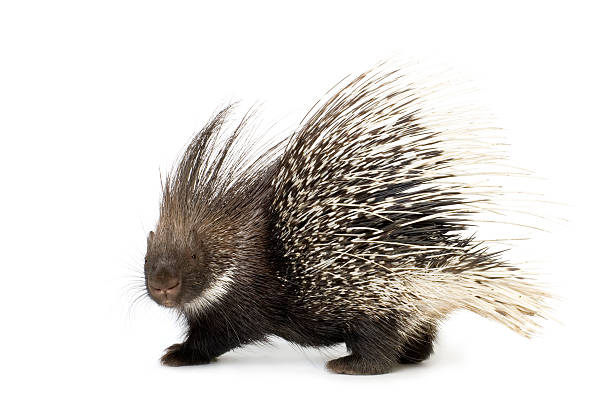Porcupines: Spiky Solitude and Unusual Behavior
Introductory Paragraph: Porcupines, often overlooked in the animal kingdom, hold a fascinating allure with their unique defense mechanism and intriguing solitary behavior. This article delves into the world of these spiky creatures, revealing the lesser-known aspects of their lifestyle, their surprising intelligence, and the latest research around their behavior and conservation.

An Intriguing Introduction to Porcupines
Porcupines belong to the rodent family and are renowned for their distinctive coat of sharp spikes, or quills, used for defense. There are two primary types: the Old World porcupines native to Europe, Asia, and Africa, and the New World porcupines found in North and South America. These nocturnal creatures are generally slow-moving and prefer a solitary lifestyle, coming together only during the mating season.
Porcupines’ Unique Defense Mechanism
Undoubtedly, the most striking feature of a porcupine is its quills. These sharp, rigid structures serve as a formidable defense mechanism against predators. Contrary to popular belief, porcupines do not shoot their quills, but the quills detach easily when touched, embedding in the skin of the attacker. Each quill is covered with microscopic barbs, making it painful and difficult to remove once lodged in the skin of a predator.
Intelligent Creatures with a Solitary Lifestyle
Porcupines are more intelligent than one might expect. They possess a remarkable spatial memory, remembering the location of food sources and their home territory. Furthermore, their solitary lifestyle is a testament to their self-sufficiency and adaptability. While they are not social creatures, they communicate through a variety of sounds, including whining, grunting, and chattering.
Current Research and Conservation Efforts
There is growing interest in the scientific community around porcupines, particularly concerning their behavior, ecology, and conservation status. For instance, recent research has shown that porcupines can play a significant role in shaping forest ecosystems by their feeding habits. Conservation efforts are underway in various regions to protect these creatures from habitat loss and hunting, which are the main threats to porcupine populations.
The Market for Porcupine Products: A Concerning Trend
While porcupines are not typically kept as pets, their quills have found a market in the form of ornaments and jewelry, leading to an increase in poaching in certain regions. The price range for these products varies widely, but the impact on porcupine populations can be devastating. It’s crucial for consumers to be aware of the potential harm caused by purchasing such products, as this demand drives unsustainable hunting practices.
Final Thoughts:
Porcupines, with their spiky exterior and solitary lifestyle, are unique members of the animal kingdom. As research continues to uncover their ecological role and intelligence, it’s crucial we take steps to protect these fascinating creatures and appreciate them in their natural habitats.




